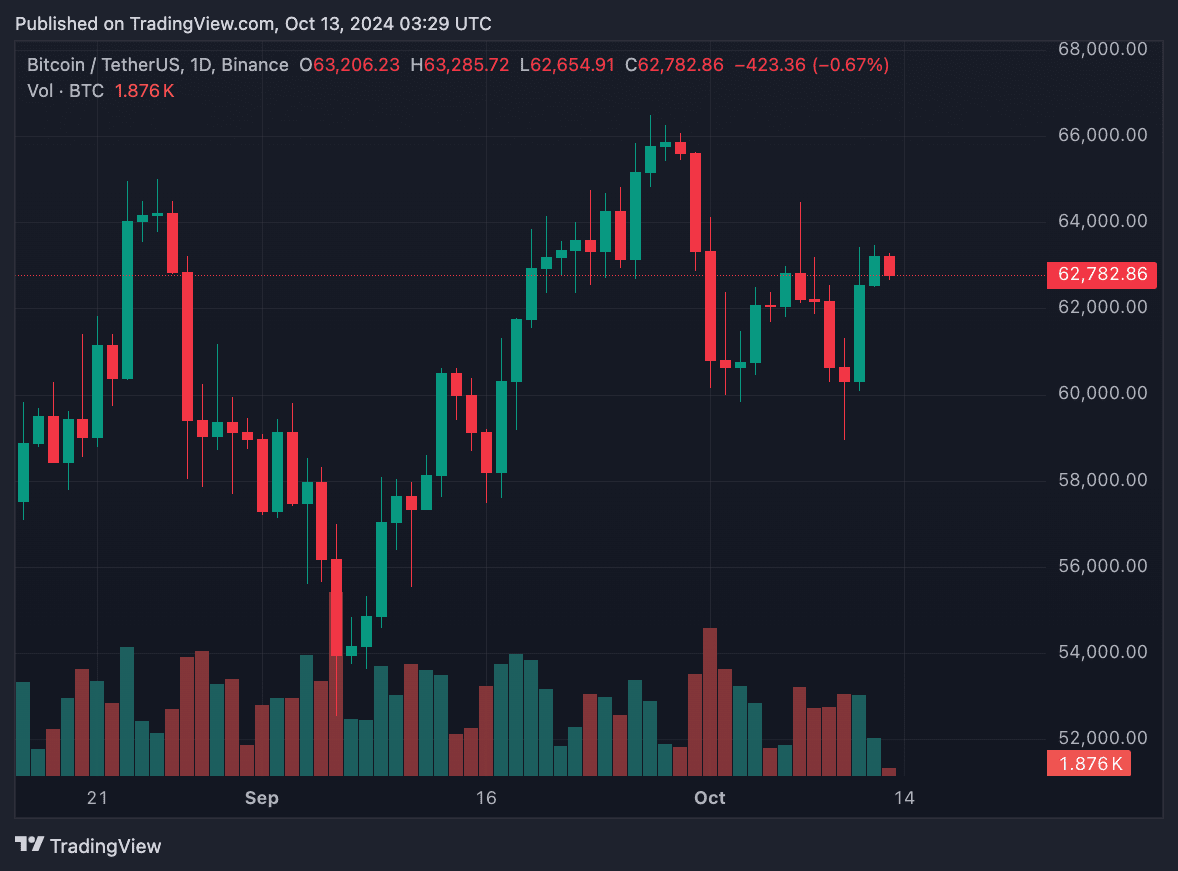As of now in 2024, it seems Bitcoin is not achieving the “Uptober” that many expected.
Historically, October has been a good month for the leading cryptocurrency. The term “Uptober” reflects past performance, with Bitcoin posting an average gain of 22.9% during the month since 2013. Some years, like 2021, have seen gains of as much as 40%.
This year, however, has been less than stellar. As of writing, Bitcoin is holding just below $63,000, after rising 8% in September.

Those looking forward to Uptober are worried as there are several factors that are currently threatening this outlook, breaking Bitcoin's previous winning streak.
Spot Market Activity, Futures and Selling Pressure
Bitcoin futures OI (open interest)* is currently at a high of $34.79 billion, one of the biggest challenges the market has faced. Historically, such highs usually indicate that the market has topped.

When traders start to take profits, we often see a correction, which can drag the price of Bitcoin down. In addition, spot market activity is low. After a period of strong buying following the September correction, this momentum has faded, leaving traders cautious and buyers reluctant to participate.
Weakness in the spot market also means there are few buyers, which provides little support for prices. When the market is in balance between buyers and sellers, prices tend to stabilize or may fall.
Selling pressure is also increasing as investor sentiment is changing. Many investors are starting to take profits, especially those who saw modest gains in September.
Macro and geopolitical factors
Macroeconomic factors are also weighing on Bitcoin. The possibility of a rate cut by the US Federal Reserve has created some optimism, but inflation and employment data remain uncertain. Consumer Price Index (CPI) data has provided little direction, making Bitcoin less attractive as an inflation hedge.
Geopolitical tensions also rocked the markets. Recent events, including conflicts in the Middle East and tensions between major powers, have had a negative impact on investor sentiment.
The upcoming US presidential election is also creating volatility in the markets. Research from XBTO shows that Bitcoin’s volatility is now more correlated with traditional financial markets than in previous election cycles, with a correlation to the S&P 500 of +86%.
All in all, the chances of “Uptober” happening seem slim.
*OI (open interest) is a measure of the total value of all outstanding or “unsettled” futures contracts on exchanges, and is also an indicator of market price momentum as well as trader sentiment around a particular asset.






